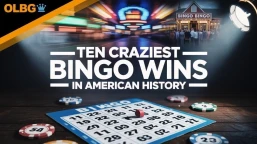
With 30+ years in racing and betting, Darren helps punters develop their skills. As OLBG’s Tipster boss and expert guide, he turns insight into winning strategy.
Everyone is familiar with the Law Of Averages and most with the problems incorrect application can cause.
However, less are familiar with the Law Of Large Numbers.
Betting systems and strategies are often based on averages and all have numbers at their heart.
For those fully conversant with the rights and wrongs of the Law Of Averages, feel free to skip the examples below.
Example 1

Example 2

Example 3

Any number from none to all can win on a given day and maybe on the next 2 or 3 days, but neither extreme can continue throughout the season.
The Law Of Large Numbers
Returning to the coin toss, the Law Of Averages would ( correctly ) dictate that for any four coin tosses, the most likely result would be for 2 heads to appear once, 2 tails to appear once and one of each to appear twice ( the order being irrelevant ).
That is no more than a case of calculating probabilities, but there again, what else is the Law Of Averages actually based on?

The Law Of Large Numbers in a way both proves and more importantly disproves the Law Of Averages.
Whilst more accurate than the Law of Averages, by definition the examples involve the longer term and therefore larger numbers.
With 4 tosses of the coin, it is likely that the result will be as above because it is the most likely outcome, but no other combination would be a surprise.
With 4000 such examples, it remains that the split will be approximately 1000 instances of 2 heads, 1000 of 2 tails, and 2000 mixed.
The major difference now is that the Law Of Large Numbers states that this exact distribution is unlikely to occur but that the larger the sample, the closer to this figure in % terms the results will get.
In a jargon-free zone the distribution maybe like this.

H will mean 2 heads, T means 2 tails and M stands for a mixture.
After 20 tosses H=4, T=7, M=9.
In percentage terms 20, 35, and 45.
After 100 tosses H=23 , T=29 , M=48.
Percentages are obvious but it should be noted that although getting closer to 25, 25, and 50 the gap between H and T is now double what it was before.
The Law Of Large Numbers suggested this could happen whilst getting closer to the par figures whereas the Law Of Averages would have expected more H than T in the second sample to compensate for the difference in the first.
After 1000 tosses the Law Of Large Numbers will expect the figures to be even closer but although they may be split H=250, T=250 and M=500 it states that this is still a very unlikely result.
Summary
The Law Of Averages says something will happen very soon if not immediately whereas the Law Of Large Numbers expects the correction to take place over a longer period.




